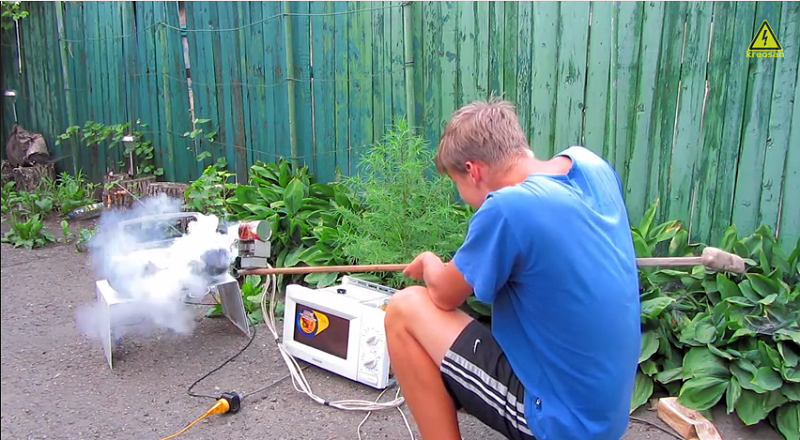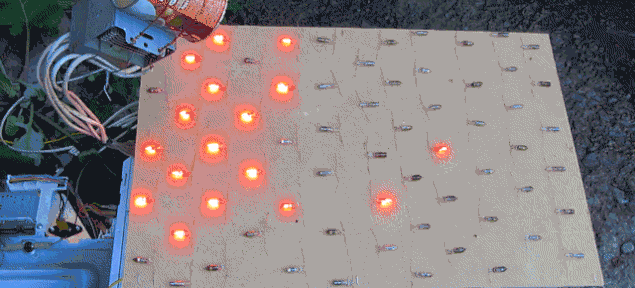
There’s no denying that Russia has become one of the Internet’s primary sources of thrilling content; daredevilry, car crashes, funny circumstances, and of course, DIY electronics. The video below is a prime example, combining two of the categories listed above: daredevilry and electronics. It consists of an experiment conducted by a pair of backyard scientists who took apart a microwave oven to harness its cavity magnetron, the component that generates the microwaves, to create a microwave cannon.
* Please do not try this at home . The 4200 volts produced by the microwave oven's power supply can deliver over 1500 watts of unfiltered DC and is highly dangerous. It can kill you instantly.
The cannon appears to have been put together using a stick, a coffee can, and of course, the cavity magnetron with its attached power supply. The pair seemingly attached the power supply to the end of a broomstick to hold the device as far away from their bodies as possible, to avoid coming into contact with raw voltage.

The end results of the experiment are equally fascinating and deadly. Aiming the power supply at a plethora of light bulbs caused them to spontaneously illuminate, remaining lit of for as long as the electric discharge remained in contact. However, aiming the discharge at a boom box caused it to instantly explode.
Microwaves are dangerous
Under no circumstances should this sheer volume of radiation ever come into contact with a human being or it will cause damage, namely cancer, a weakened immune system, birth defects, cataracts, and death. But the most dangerous aspect of the microwave oven by far is its power supply. The 4200 volts produced by the microwave oven's power supply can deliver over 1500 watts of unfiltered DC which can result in immediate death if it comes in contact with human flesh.
How does it work?
Cavity magnetrons are high-powered vacuum tubes that produce microwaves as a result of the interaction between electrons and magnetic fields as the electrons flows through a series of open metal cavities located within the device. The electrons passing through the cavities excited radio wave oscillations within the cavity in much the same way that plucking a guitar string excites sound waves in its soundhole. The resonating cavities emit microwave radiation that is then collected and funneled into the cooking compartment of the microwave or, as in the case of the experiment above, beamed into the air using an antenna. Of course, the process isn’t remotely this simple, but these are the fundamentals.
Disclaimer
Electronic Products does not endorse the use of such dangerous experiments.

The original video, along with a host of what the creators describe as a host of “unusual experiments with electricity that differ from the majority of habitual thinking” can be found in their YouTube channel: Kreosan.
Via YouTube
Advertisement
Learn more about Electronic Products Magazine





